#arkhi
Explore tagged Tumblr posts
Text
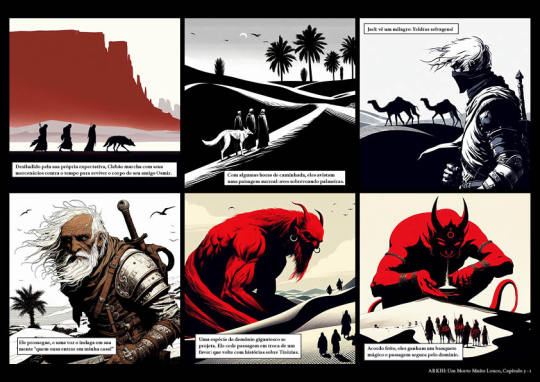
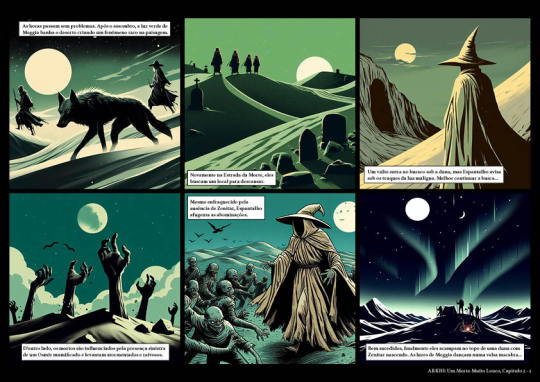
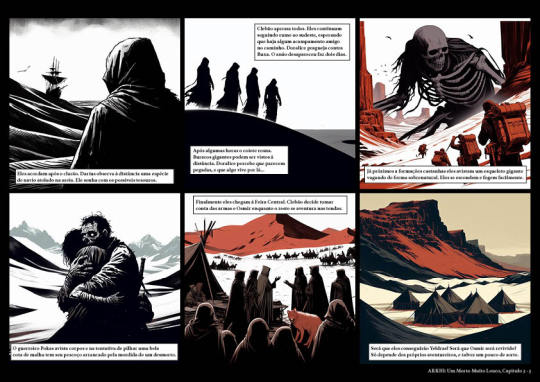
ARKHI: Um Morto Muito Louco - Capítulo 3: Rumo a Feira Central
Buxa desaparece e o grupo precisa seguir. Eles encontram Pokas, que é contratado para ajudar, mas não dura muito. Após muitos encontros que ninguém além deles irá acreditar, o grupo encontra a Feira Central.
Jogadores: Felipe Duarte, Emegê, Tallys, Victor Barros, Ale Lopes e Felipe Novaes
Mestre: Gustavo Pascoa (Brainstorm RPG)
Nas tórridas dunas de areia negra do deserto de Lumn, aventureiros caçam tesouros na esperança de um futuro melhor. O perigo desta insalubre terra é agravado pelas ameaças quase alienígenas que aqui habitam. Para saber mais sobre ARKHI e Brainstorm RPG clique AQUI
7 notes
·
View notes
Text
O BULETTE DOS PÂNTANOS - Um novo monstro para OLD DRAGON SEGUNDA EDIÇÃO e LEGIÃO: A ERA DA DESOLAÇÃO RPG! + DOWNLOAD DA FICHA DO MONSTRO EM PDF!
Direto da nossa campanha de Legião: A Era da Desolação e Old Dragon 2E trago hoje para vocês o BULETTE DOS PÂNTANO, uma criatura colossal e furtiva, temida por sua habilidade em emboscar presas. Essa variação mais monstruosa do Bulette tradicional, apelidada de “tubarão dos pântanos”, é uma força a ser temida em qualquer cenário de fantasia. Com habilidades como a Emboscada do Pântano e o Rugido…

View On WordPress
#2d6World#Arkhi#Arkhi RPG#Como Jogar RPG#como mestrar rpgs#Dica de RPG#dicas de mestre#Dicas de RPG#dicas para mestres de rpg#Dungeons and Dragons#Financiamento Coletivo#games#jogos#Legião A Era da Desolação#Newton Nitro#NitroCast#Old Dragon#Old Dragon 2E#Old Dragon Segunda Edição#Podcast de RPG#roleplaying game#RPG#RPG ao Vivo#rpg brasil#rpg de mesa#RPG Online#Sessão de RPG#SteamRunnerz#tabletop games#Tio Nitro
0 notes
Text
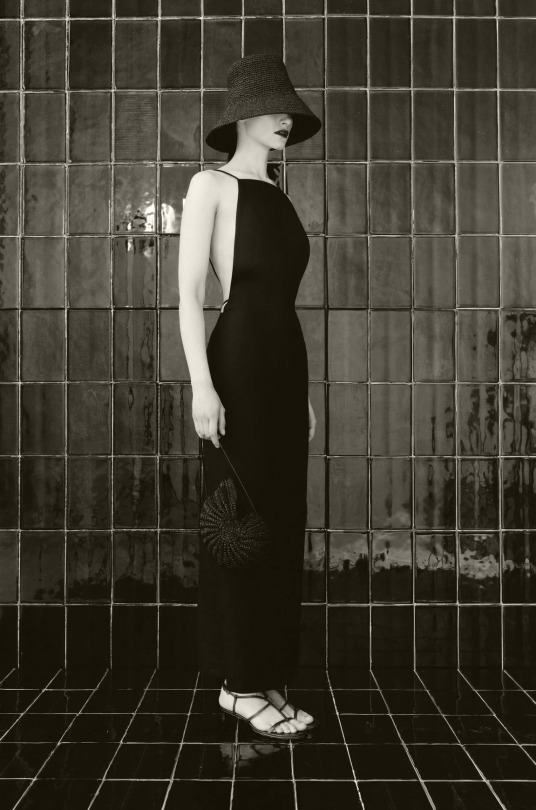
Galina Arkhi captured by Nazar Chernyy for J'amemme
51 notes
·
View notes
Text
Georgian riot police in Tbilisi have violently cracked down on a pro-EU demonstration sparked by Prime Minister Irakli Kobakhidze’s announcement that Georgia was halting its EU membership bid ‘until 2028’.
Thousands of demonstrators stayed overnight on Rustaveli Avenue, periodically clashing with the riot police who were using pepper spray, water cannons, tear gas, and physical violence against demonstrators, opposition figures, and journalists.
Mtavari Arkhi published video footage showing the law enforcement officer allegedly firing rubber bullets at demonstrators.
While several demonstrators were detained throughout the night, the Interior Ministry has yet to confirm the number of detainees.
The protest in Tbilisi and several other cities, including Batumi, Kutaisi, Gori, Zugdidi, and Telavi erupted shortly after Prime Minister Irakli Kobakhidze stated that the country was halting its EU membership bid ‘until the end of 2028’.
In Tbilisi, protesters gathered around the ruling Georgian Dream party’s headquarters before proceeding to march to Rustaveli Avenue, where parliament is located.
Georgia’s outgoing President Salome Zourabichvili made an appearance at the protest in Tbilisi, where she addressed the riot police, calling on them to remember who they served.
‘It is not your duty to tear people apart. Do you serve Russia or Georgia? To whom did you swear an oath? I am interested in your answer. Will you not answer the president?’ Zourabichvili asked them. ‘For how many GEL are you serving another country?’
There was no response from the riot police.
Tensions between the protesters and police continued to escalate throughout the night, as police heavily reinforced their numbers as the protest went on.
The Ministry of Interior later published a statement saying that the demonstration had gone ‘beyond the norms established by the Law of Georgia on Assemblies and Demonstrations’.
Riot police then escalated by deploying large amounts of pepper spray and water cannons to disperse the protesters from the sides of parliament onto Rustaveli Avenue.
Throughout the protest, footage regularly emerged of police violently assaulting and detaining protesters.
Human rights organisations condemned the riot police’s use of force on Rustaveli Avenue, describing them as measures ‘carried out with the use of unlawful and disproportionate force’.
Police have attempted to push the protesters off of Rustaveli Avenue, where they have set up makeshift barricades and lit fires along the street.
At around 06:00 the opposition Coalition for Change group stated that two of their leaders, Elene Khoshtaria and Nana Malashkhia, were injured during the protest.
Journalists detained, beaten, and water cannonned
During the protest, numerous reports emerged of journalists being targeted by riot police.
OC Media’s journalist and co-director, Mariam Nikuradze, was hit by one of the earlier deployment of the water cannons. She sought medical care at an ambulance nearby shortly after, reporting that there was likely pepper spray mixed in with the water.
Nikuradze’s camera additionally got damaged when she was hit by the water cannon. The police have also knocked Nikuradze’s phone out of her hand as she was filming them marching through the street.
Riot police have also fired tear gas directly at OC Media’s editor-in-chief Robin Fabbro on Lesia Ukrainka Street, a side street off of Rustaveli Avenue. There were only a few other people on the street, and Fabbro was wearing a vest that clearly stated he was a member of the press.
Publika’s journalist Aleksandre Keshelashvili was also reportedly temporarily detained by the police. In a Facebook post, Keshelashvili wrote that upon his detention, he tried to tell the police that he was a journalist, but said that it only made the police — who were masked — insult him and beat him more.
Keshelashvili says that the police confiscated his cameras, press ID, and gas mask.
TV Formula published footage appearing to show a riot police officer tackling and hitting their journalist, Guram Rogava, on the head, and later being hospitalised as a result.
According to them, the officer was ‘first beating a fallen civilian, then ran towards Guram Rogava and deliberately hit him in the head’.
TV Pirveli reported that one of their camera operators, Niko Kokaia, was injured while covering the protests on Rustaveli, accusing the police of spraying pepper spray in his face from close range.
‘TV Pirveli assigns the responsibility to the Minister of Internal Affairs, Vakhtang Gomelauri, and we call on him to give us the opportunity to fulfill our professional duties’, the station wrote. ‘We explain that special forces are particularly aggressive towards TV operators. Their goal is to disable the TV signal’.
At around 07:00, RFE/RL’s journalist, Dato Tsagareli, was reportedly punched in the stomach by a masked riot police officer while he was covering the protest.
During the protest, riot police also appeared to be deliberately hitting on-duty journalists on Rustaveli Avenue with water cannons.
President Zourabichvili has posted on X in solidarity with journalists, saying that she stood ‘with the Georgian media, who are disproportionately targeted and attacked while doing their job and reporting continuously.
26 notes
·
View notes
Text
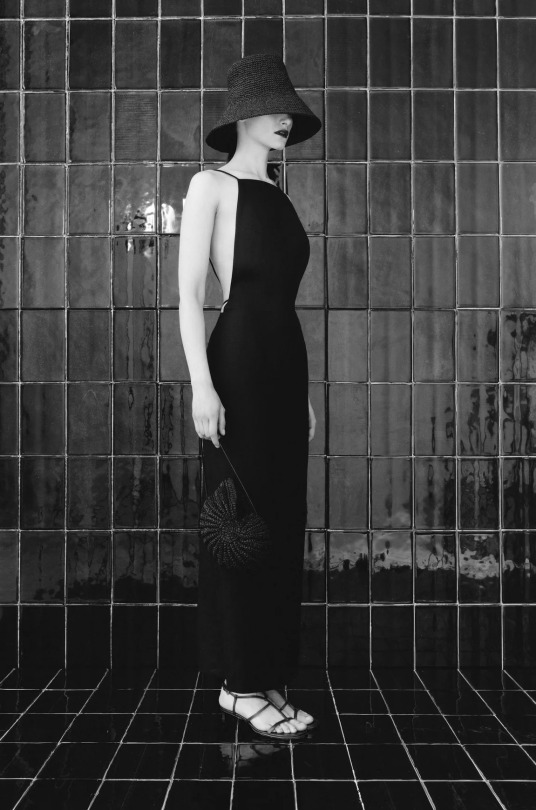
Galina Arkhi captured by Nazar Chernyy for J'amemme
29 notes
·
View notes
Note
for the WIP game: while I find "post war dinner party thancred thing" hilarious(ly relatable) as a WIP title, the one that actually intrigues me is dragoon line. would you like to share more about it? :3
So, I don't know if any of y'all are familiar with Final Fantasy XIV, but I've played as dragoon for every expansion (so far) except Stormblood, which I went through as ninja. So the dragoon questline for Stormblood sort of happens right at the beginning of the expansion and then takes a backseat for most of it, then picks back up after the main story has concluded.
It's also an incredibly important milestone since the end of the questline is when Kitali realises she's in love with Estinien, who has been on a walkabout since the ending of the previous expansion and whom she hasn't seen in the better part of a year, at that point. The quest is about reuniting a mated pair of dragons who had been separated for a thousand years, and it seems extremely fitting (for me and my wolstinien agenda, at least) that that is the atmosphere in which Kitali is having this realisation.
And then she drinks a whole bottle of arkhi to herself and calls her husband about it. It's a mess. It's delicious.
Unfortunately it's also not anywhere near coherent at the moment, it's mostly bullet points and a few lines of dialogue here and there. But this is a problem for future me :)
Thank you so much for the ask @queer-omens-in-the-archives
Ask me about my WIPs
6 notes
·
View notes
Text
Daily Inconveniences of an Au Ra: Alcohol
The whiskey burned all the way down Keshet's throat, a familiar sort of tingle that spread warmth through his chest and made his head feel airy.
"Damn, you can handle your booze better than I expected, to keep up with me this long."
Keshet’s gaze slid over to Thancred, perched comfortably beside him. He gestured with his mug, just barely not splashing them both with its contents when he got a little bit overly animated. "What, do you think we don't have alcohol on the Steppe? And anyway, we invented buuz. And this? This is not buuz."
Thancred squinted at him as if there was some linguistic nuance he was missing, but Keshet decided that was thoroughly a Thancred Problem and contented himself with another swig from his mug. He remembered belatedly to twist his hand out of the way of his damned horn, gouging himself on the point of it and sloshing amber liquid onto the bar.
"Besides," he continued. He was feeling rather chatty, might as well indulge in conversation too. What better time to reveal all his secrets than over a mug of... whatever this was. "Besides. I'm much larger than you. It's only natural I can outdrink you. In fact, I'm impressed you can keep up with me, you little-" Thancred's brow furrowed at the indecipherable word that followed. Something in Old Auri, most likely, and he wasn't entirely sure that it had sounded complementary.
Okay, so maybe Keshet hadn't actually been that big a drinker back home. They had alcohol, that was for certain, but it wasn't really all that like the stuff he'd seen in Eorzea. Eorzean ale was little more than piss water, as far as he was concerned, and though people assured him there were hints of honey in mead, he couldn't taste it amidst the acrid taste of the drink. And it was too weak to be good for much of anything. Proper arkhi would put some shine in your scales; ale and mead were hardly worth subjecting himself to the taste.
But he had to admit that alcohol was simply less common on the Steppe than it was here. Well, he didn't have to admit that to Thancred, but he could admit it to himself. Alcohol was just everywhere in the West. You celebrated victories with it, you signed deals over it, you drank it casually over dinner. Really, maybe it was a good thing ale was so weak. Xaela were known to do some rather peculiar things when soused on arkhi or kumis. On the Steppe, their drink was strong, but you also weren't especially likely to down four glasses in a single sitting. Kumis wasn't exactly rare, but it was a pain to make, especially among the more nomadic tribes.
Of course, once Thancred had introduced Keshet to Eorzea's stronger spirits, all bets were off. Sure, whiskey still lacked the body of the fermented milk he was used to, but it packed a certain punch. Enough to be satisfying, at least. And maybe enough to make his head ache something fierce the next day.
Thancred arched a brow, swirling the amber liquid in his glass, and when he spoke Keshet had to struggle to remember what it was they'd been talking about before he got lost in thought. "Alright, big boy. Let's see if you can keep up with this, then. Barkeep! Bring us two glasses of Mun-Tuy brew!"
As it turned out, size was not everything when it came to holding your alcohol -- a lesson that was deeply engraved into Keshet's mind after he spent the next day fighting Garleans with Azim's foul light trying to crack open his skull. Never again.
-
Read the rest of the series on Ao3!
FIRST | PREV | NEXT
6 notes
·
View notes
Text
@crimsinned ; does she drink kumis?

"I do, but honestly, I prefer Arkhi over all."
1 note
·
View note
Text
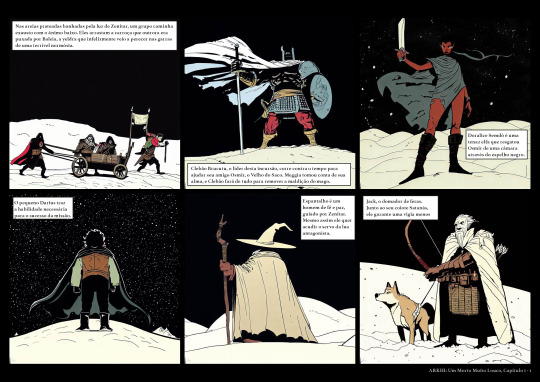

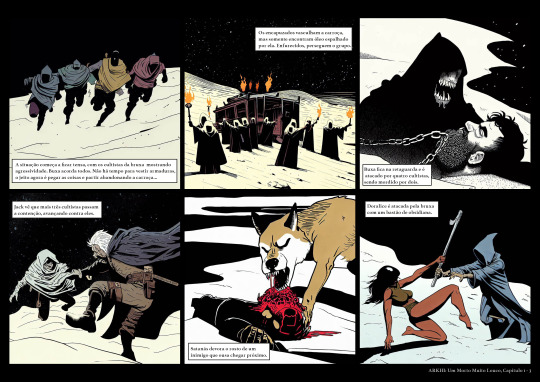

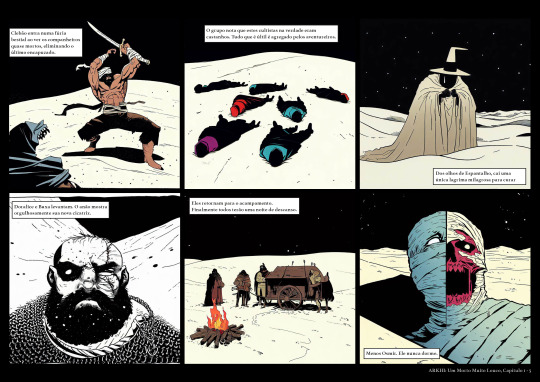
ARKHI: Um Morto Muito Louco - Capítulo 1: Noite Castanha
O guerreiro Clebão lidera um grupo para resgatar a alma de Osmir, um lendário clérigo da lua maldita Meggia, que foi corrompido devido a eventos astrais. Seu cadáver embalsamado e envolvido em ataduras se remexe inquieto, num sussurro abafado de loucura e feitiçaria.
Jogadores: Felipe Duarte, Emegê, Tallys, Victor Barros, Ale Lopes e Túlio Cerquize Mestre: Gustavo Pascoa (Brainstorm RPG)
Nas tórridas dunas de areia negra do deserto de Lumn, aventureiros caçam tesouros na esperança de um futuro melhor. O perigo desta insalubre terra é agravado pelas ameaças quase alienígenas que aqui habitam. Para saber mais sobre ARKHI e Brainstorm RPG clique AQUI.
#arkhi#horror rpg#mesa aberta#rpg#wierd fiction#stranger than fiction#osr#osr rpg#ttrpg#ttrpg art#dnd#dnd bx#ose#old school essencials#brainstorm rpg
5 notes
·
View notes
Text
OÁSIS DAS ÁRVORES MALDITAS - Um local de aventura para ARKHI RPG | Old Dragon Segunda Edição
Embarque numa jornada traiçoeira até o Oásis das Árvores Malditas, uma terra de mistérios sombrios e perigos insondáveis, localizada nos confins do deserto de Lumn. Aqui, as energias obscuras convergem, criando um caldeirão de enigmas antigos e terror silencioso. O OÁSIS DAS ÁRVORES MALDITAS Um local de aventura para ARKHI RPG Newton Nitro – https://linktr.ee/newtonnitro NOVO MARCO COMUM: OÁSIS…
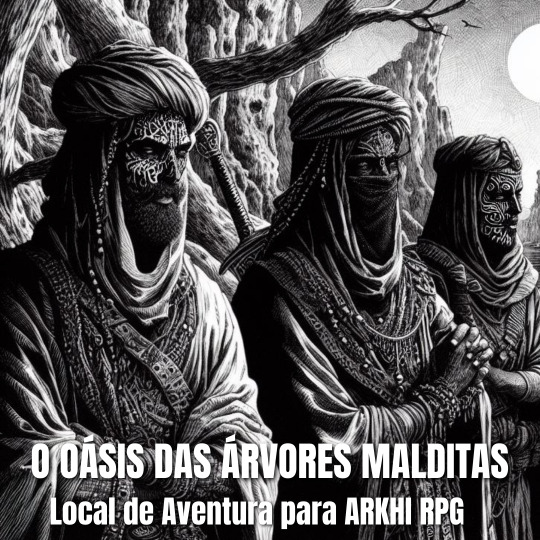
View On WordPress
#2d6World#Arkhi#Arkhi RPG#Como Jogar RPG#como mestrar rpgs#Dica de RPG#dicas de mestre#Dicas de RPG#dicas para mestres de rpg#Dungeons and Dragons#Financiamento Coletivo#games#jogos#Legião: A Era da Desolação#Newton Nitro#NitroCast#Old Dragon#Old Dragon 2E#Old Dragon Segunda Edição#Podcast de RPG#roleplaying game#RPG#RPG ao Vivo#rpg brasil#rpg de mesa#RPG Online#Sessão de RPG#SteamRunnerz#tabletop games#Tio Nitro
0 notes
Text
Fun times in the studio! #RenigadeCineTrax #NativeInstruments @nativeinstruments #Fables #Arkhis #ChoirxOmnia #Lores all in #Maschine using s88mk1!

0 notes
Note
*hands the demo a mix of gin, tonic, rum, whiskey, vodka, oghi, arkhi, cocoroco, tequila, arrack, and for a chaser, black powder and scotch* I call it the Reaper's Cola
Demo! I got a drink for ya!
YyeeAGHHH THANKS LAD
11 notes
·
View notes
Photo
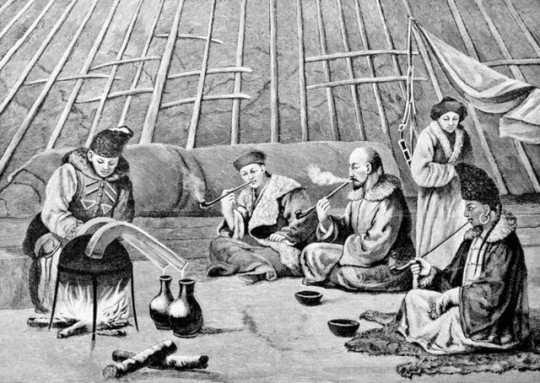
“Arrack, arak, raki, arkhi. It is confusing. These are not all the same spirit, and people have been getting them mixed up for as long as international travel has brought them to the attention of international travelers. Arak and raki are middle-eastern grape-based spirits flavoured with anise. Arkhi, from Mongolia, on the other hand is distilled from koumis, fermented mare’s milk, that is frequently described as one of the least-pleasant beverages ever consumed for pleasure. And arrack was once a Hindi umbrella-term for all distilled spirits. One intrepid explorer wrote in 1825: “The natives call our gin English arrack.” But arrack is not all spirits.
Although its birth is lost in history, there is no doubt arrack is one of the world’s oldest distilled spirits. It predates Scotch and Irish whiskey. It predates gin and genever. After Marco Polo commented about it in his memoir Il Millione, it was brought to Russia by Genoese merchants a century before the Russians’ love of mead and beer was replaced with a taste for distilled spirits. In fact, it is the parent of vodka.”
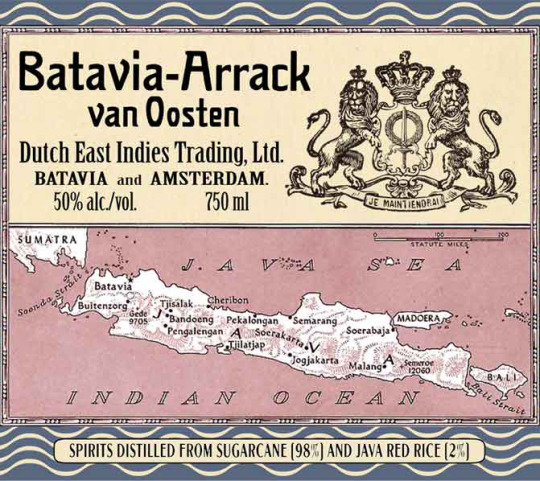
“Produced on the island of Java, Batavia arrack is distilled from molasses and water, using dried cakes of red rice and botanicals that contain yeast and other fungi spores that trigger the fermentation process. This technique can be traced back thousands of years to China and even predates the birth of distillation. The fermented molasses mixture is then distilled in traditional pot stills. The Dutch East India Company, in 1619, laid claim to Java and renamed the capital city Batavia. A name it would hold until the Japanese occupation, in 1942, when it was titled Djakarta.
So, why did such a popular spirit vanish? The first blow was taxation. By the early 1800s protectionist import taxes were levied against spirits imported from the east, giving an enormous advantage in Europe, then the world’s richest market, to Caribbean and American rum producers. The British East India Company went so far as to ban the transport of arrack on its ships except for consumption on board. Rum production grew exponentially, while arrack production gradually faded.”

“During the Second World War, the Pacific theatre witnessed horrific battles, and most arrack production ceased. In some places, like in Goa, it disappeared completely. In Java, it nearly disappeared (exports were almost solely sold to China and Sweden), but has come streaming back onto the world market only in the last few years. Despite the external pressures, it is odd that arrack disappeared.
Now that arrack has once again emerged, it is important to understand the differences between the two primary styles (differences that make them less alike than vodka and gin, for example). Batavia Arrack is a heavy, funky uncle of dark rum. It is oily and unrefined, rich both in pleasant flavours and harsh impurities. Ceylon Arrack, by contrast, is a remarkably refined, soft and subtle spirit. It has hints of Cognac and rum character and a wealth of delicate floral notes, and would likely run screaming from a glass of its coarse Batavian namesake. (This style is not to be confused with Philippine Lambanog, which is distilled from coconut palm sap, but has more in common with moonshine and is rarely seen outside of the Philippines.)”

Rediscovering the World’s First Luxury Spirit: Batavia Arrack
“Batavia arrack is still sold, if not widely, and is even undergoing something of a renaissance in the English-speaking world, if only because after years of being completely unavailable it is now available. We know that Batavia arrack is made on the Indonesian island of Java from molasses and rice and that it’s shipped to the Netherlands, Indonesia’s former colonial ruler, where it’s aged and blended and bottled.”
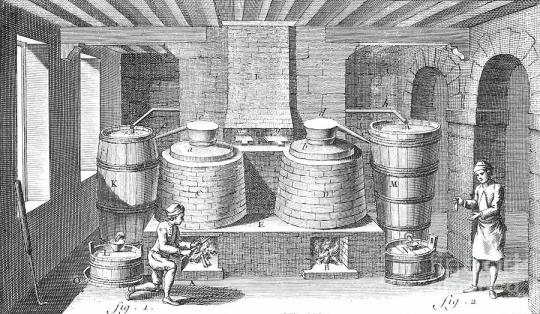
“Making alcohol from grain is much more difficult than making it from fruit or sweet sap, because only sugar will ferment, and grain has no sugar. What it does have is starch, which can be converted to sugar with a little work. In Europe, the process people used to do that was malting: artificially sprouting the grain, which triggers enzymes that convert the starch to sugar, and then toasting it to kill the sprout before it can use up all that sugar in growing.
In China, however, they found a different way. Chinese distillers have brought grain to fermentation by incorporating a fermentation-starter, a cake of rice or wheat that has been allowed to mold under controlled conditions (certain molds produce the same enzymes that malting does). These cakes, qu or chu, also attract yeast, so they both turn the starches to sugar and start the sugar fermenting.”

“In 1596, the first Dutch scouting-trading expedition made it to the East Indies. When they explored Java, they found an island newly fallen to Muslim conquest, its traditional Hindu kingdoms all replaced by loose rule from Muslim-dominated trading towns along the north coast... The Dutch first made their base at Bantam, near the western end of the Island, a bustling trading port the size of Amsterdam with a large, new Chinese population (a “very subtle and industrious people,” as the Dutch report on the voyage put it).
The Fujianese were making “much aqua vitae of rice and Cocus [i.e., coconut-palm sap].” The mixture of raw materials was a known technique in Chinese distilling; indeed, in parts of China qu was mixed with grapes to start fermentation. This seems to be what was going on in Bantam: The Chinese were adapting their techniques to local materials, stretching out their traditional rice spirit with the cheap and abundant local palm wine.”

“There was nothing like it in Europe, where almost all the spirits had to be distilled with pungent botanicals—either juniper berries, aniseed, caraway, or mint, or some complex mix of medicinal herbs—just to hide the taste of the raw spirit. But the Chinese had been distilling for over a millennium and knew how to get a clean spirit, and a strong one: most of the European spirits were single-distilled, as was palm arrack, while the Chinese generally did a double distillation. Yet this spirit wasn’t fully Chinese, either: Palm wine wasn’t a Chinese ingredient, and it brought a sweet softness to the spirit that was very different from what the people back home in China looked for in their strong drink.”
(via Rediscovering the World’s First Luxury Spirit: Batavia Arrack | The Daily Beast)

Arrack: The lost spirit of adventure
“Before sugar cane was planted in the Caribbean, before gin laid waste to London, even before the word “alcohol” was first used, people drank arrack.”
“Since the words “alcohol” and “liquor” would not be coined until two millennia after the drink was first recorded, the word “arrack” (along with its different spellings and accents) became a popular term for any alcoholic beverage. With India’s close influence on the Spice Road trade routes that fed the Persian, Mongolian and Ottoman Empires, arrack (both in word and product) travelled and traded alongside the silks and spices of the time. As such the drink and its name became associated with the empires of the east until eventually emerging onto European shores with the first East India merchantman of the 16th century.”

“A more unique style of arrack (aka arkhi, araku, arika or vina) is that of the Mongolians. Distilled from their national drink airag (aka koumiss – a traditional wine made from fermented mares milk) once distilled, the milk yields a mere one-tenth the alcohol of traditional fruit and grain spirits. Additionally since the milk has no vegetable ingredients, it is impossible for the fermentation to produce any methyl alcohol and so a single rough distillation is commonly enough.
With the huge sums of money made by the might of the English and Dutch East India trade companies it was only a matter of time before barrels of arrack arrived back into the home ports of London and Amsterdam. Under the additional influence of the new coffee house culture of the later 17th century, the common servings of ale and mead made way for more spirituous tipples such as genever, brandy and arrack. And the most popular way to enjoy them all – punch.”
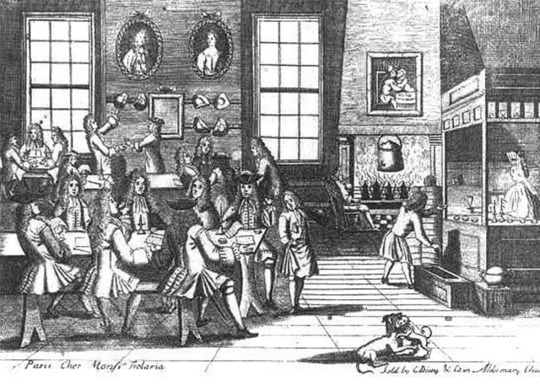
“The etymology of the word “punch” further supports an East Indian origin with the Hindustani word for “five” written as paanstch...In 1644 an East India representative remembered only as Bennin, mentions an early punch named boulepongemade of “arrack, black sugar[molasses enriched sugar], juice of lemon, water, and a little muscadine [sweet wine]“. These same five base elements to which punch is defined (sweet, sour, strong, soft, spice) would ultimately help form the same base to which many of our modern cocktails apply – sugar, citrus, spirit, mixer and bitters. As for sailors, punch and arrack became as synonymous with their profession as wenches and scurvy.”

“By the early to mid 1700’s many an English coffee house became rebranded the punch house in line with the emerging popularity of the drink. One of London’s most popular venues was The London Coffee House and Punch House ...the worlds first cocktail book written by Jerry Thomas in 1862 (How to Mix Drinks or the Bon Vivants Companion), contained a large number of arrack recipes such as the aptly named Arrack Punch and popular Ruby Punch (click here for full recipe).
Since its earliest reference in Indo-Aryan Sanskrit at the start of the Iron Age, arrack is now over 3200 years old. Arrack has influenced the creation of the worlds first mixed drink while fueling the colonists and adventurers who helped develop much of the modern world.”
(via Arrack: The lost spirit of adventure | Drinking Cup blog)

Kumis, the Traditional Drink of Gengis Khan and Attila the Hun
“Starting with kumis. This is a fermented dairy product, originally made from mare’s milk. Therefor a good example of the lifestyle of the ancient residents of the Asian steppes. These people were surrounded by horses since the day they were born, and as a figure of speech they rode them before they could walk. In the bare wide plains these tribes depended fully on their trusted animals. For transportation, fighting, clothing and food and drinks.Mare’s milk contains more sugar than sheep or goat milk, of which it’s cousin kefir is made.”
(via Kumis, the Traditional Drink of Gengis Khan and Attila the Hun | The Lord of the Drinks blog)

Kumiss - A discussion thereof.
“Occasionally, the Mongols distilled the airag to make a clear spirit called Arkhi with their homemade distillery. A bowl of airag is placed in the bottom of the metal barrel shape container, an empty bowl is fitted inside it towards the top of the barrel and a third bowl of cold water is placed at the top. All of this is placed on top of the stove, which is heated by dried animal dung. The airag is heated, evaporates and condenses on the bottom of the cold bowl and drops into the empty bowl. This can produce Arkhi up to 10-20% alc depending on the still.”
(via Kumiss - A discussion thereof. | Jolly Duke Tavern blog)
Arkhi made from kumis kefir in a Mongolian yurt
youtube

0 notes
Photo

Grateful to be able to start to make music again! A wonderful belated birthday gift of a new laptop from my parents allows me to quickly and easily start new new productions, whilst playing my most recent stuff without breaking a sweat! No immediate plans for releases right now but as soon as I’m on to new bits to share, I’ll let you know! #MusicProduction #Hardware #Maschine #KompleteKontrol #MaschineJam #Kontakt #Reaktor #Arkhis #SymphonyEnsemble #BassGuitar #Cinematic #Soul #Jazz #Funk https://www.instagram.com/p/CY6urCQo3vU/?utm_medium=tumblr
#musicproduction#hardware#maschine#kompletekontrol#maschinejam#kontakt#reaktor#arkhis#symphonyensemble#bassguitar#cinematic#soul#jazz#funk
0 notes
Photo
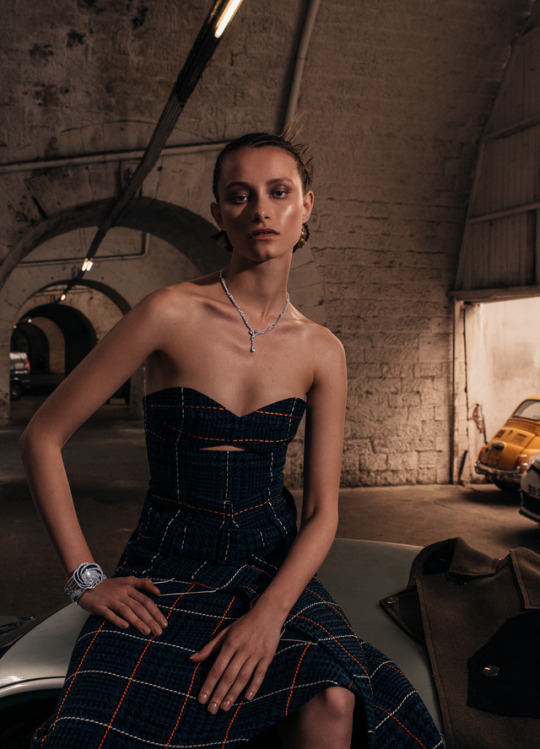
Galina Arkhi by Demarcus Allen
7 notes
·
View notes
